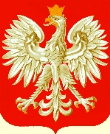The Value of the Documents of the PUR Collection
Too often, we as genealogists rely solely on vital records, the certificates documenting birth, marriage and death. Although this part of our research is most helpful, we sometimes neglect other types of documents. As genealogists, we should continually search for new resources to help in our pursuit of family history. We may need to track siblings and cousins of our direct ancestors who remained in Poland. Sometimes church records are not available to us for certain years, especially for the past 100 years. Perhaps we are searching for our family members lost after years of war and political upheaval. The post-war records of PUR can be extremely useful in such research. And for researchers of the regions of the Eastern Lands now no longer within Polish borders, the so-called zabu żanski region, or "region beyond the Bug River, the PUR Collection is vital to family history.For Polish families of the Kresy, the forced migration due to the national border changes made after WWII was a painful and important event. A family could have lived in a certain village or region for centuries, only to be suddenly moved hundreds of miles to a new home in a strange land. Suddenly changed was centuries old way of life and customs. For such families, an entire ancestral heritage was changed. Once such families were mixed with neighboring ethnic Ukrainians, Belarusians or Lithuanians. Now, after moving to and spreading out in the western and northern Polish provinces, those connections are no longer continued. While visiting my relatives in the small village Skrzypnik, in Oława powiat, located about 30 kilometers southeast of Wrocław, I could still hear this connection with the language of the older people, which is filled with Ukrainian words and colorful rhythm...evidence of close ties with neighboring Ukrainians where they lived before WWII, in a village called Usznia, located about 600 kilometers to the east in Ukraine (about 60 kilometers east of Lwów). Also lost is the familial connections between ethnic Poles of neighboring villages in the Eastern Territories, but which now found themselves miles apart in the new western provinces. I use my own family as example. My maternal family comes predominately from two neighboring villages, Czeremosznia and Usznia. These villages are right next to each other about 120 kilometers inside the Ukrainian border. After WWII, most families from the village of Czeremosznia resettled in and around Kurznie, Popielów powiat in Opole województwo, while most families from Usznia settled in and around Domaniów, Oława, powiat in Dolnośląskie województwo. Although most of the older residents of these villages today know about the existence of each other, there is no longer an ancestral tradition uniting the families for the future. Once families from these two villages in the eastern territories intertwined and intermarried. Today, due to about a 10 kilometer distance between the two villages in southwestern Poland, the families are no longer closely connected. This situation is made more difficult by the fact that not everyone from one village resettled to the same village in the western territories. Though there may be some predominant places, families moved and spread out all over western and northern Poland. To understand why families relocated and where to find important records, we must first know a little background history.
Return to Table of Contents for Repatriation, Resettlement and the PUR Collection |
|
www.halgal.com
Questions and Comments to Matthew
Bielawa |

